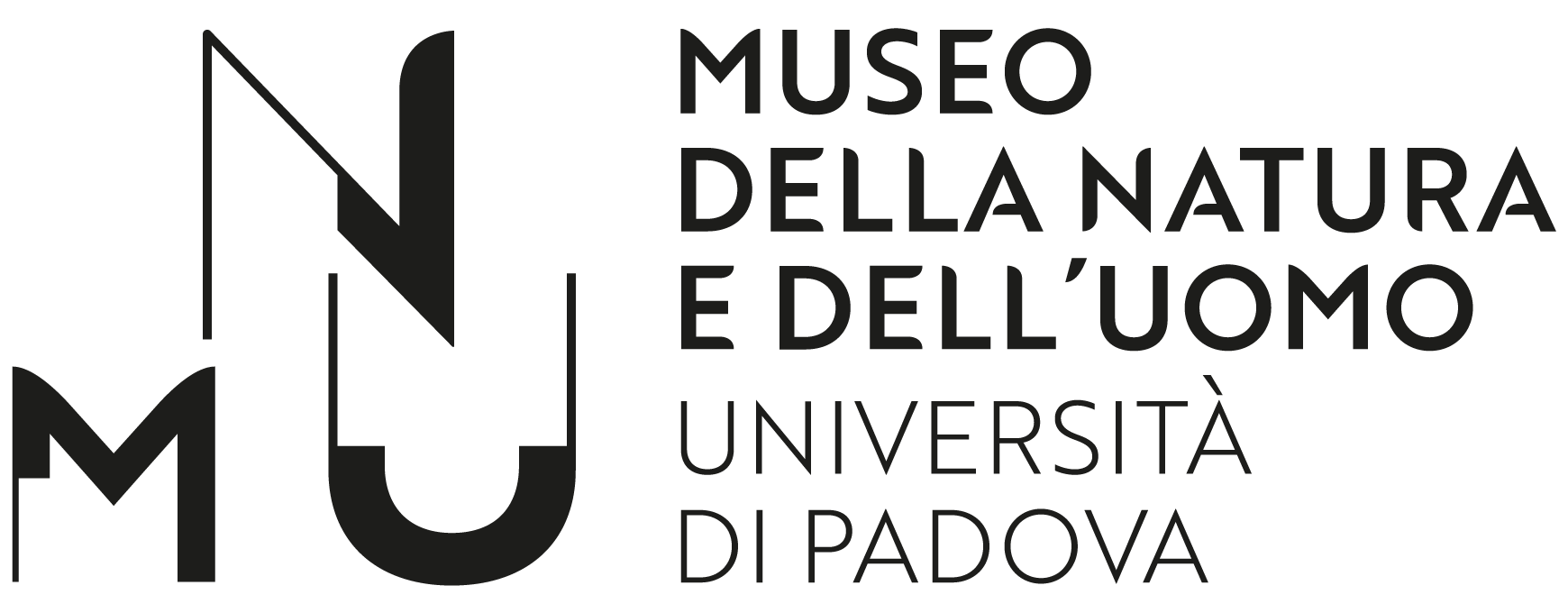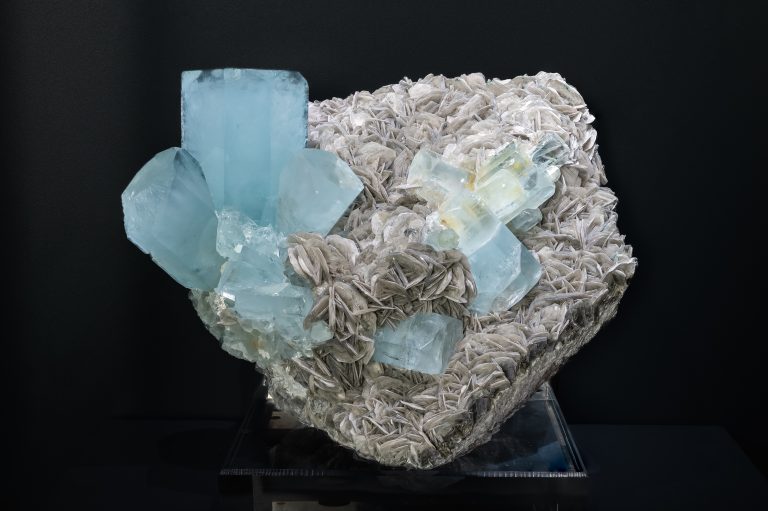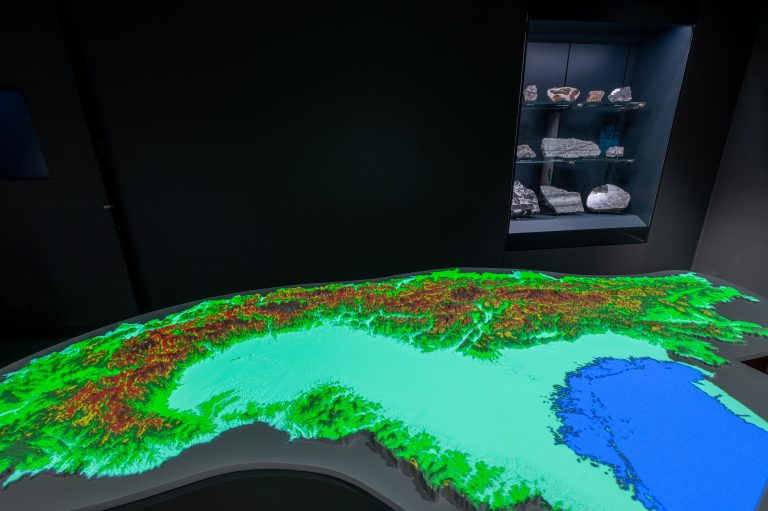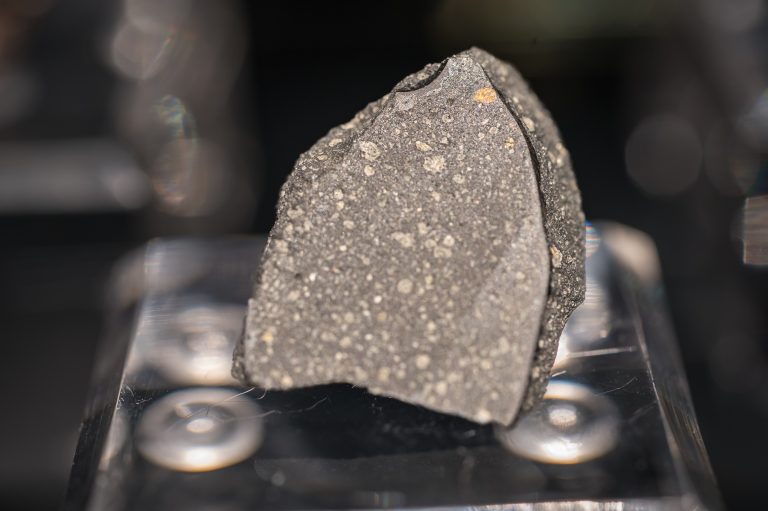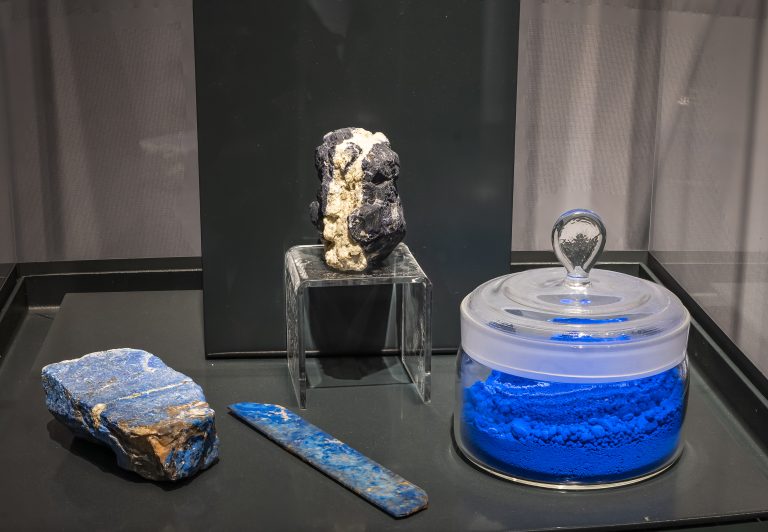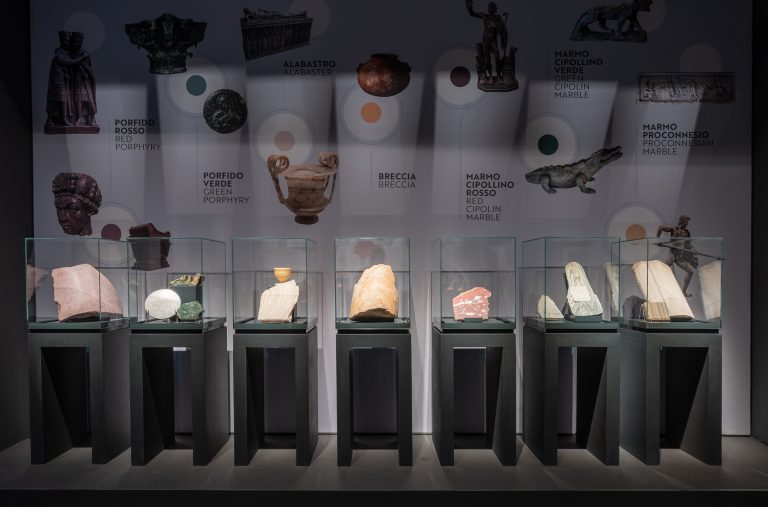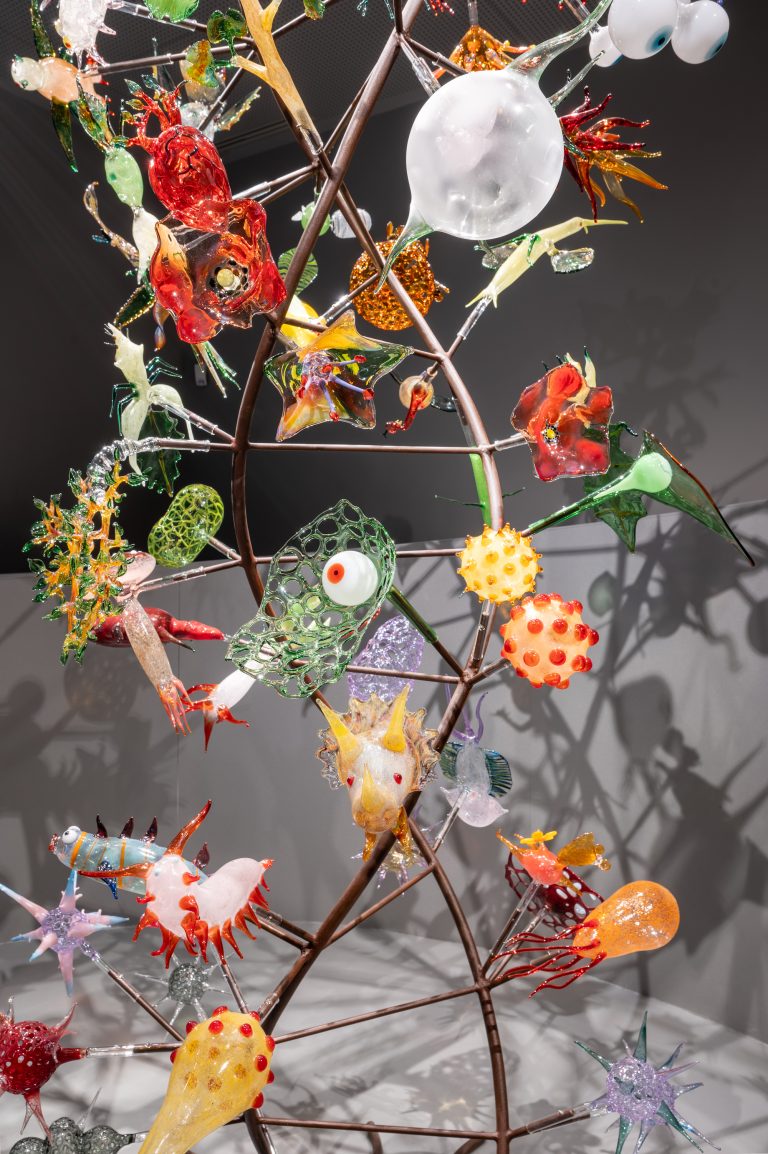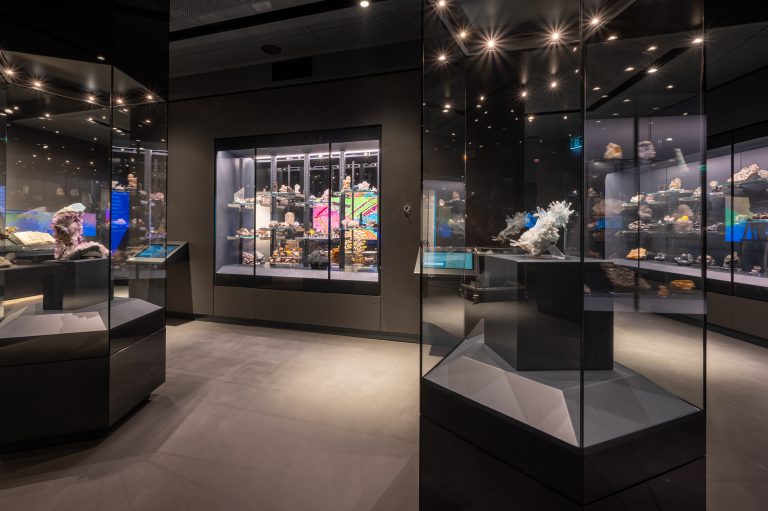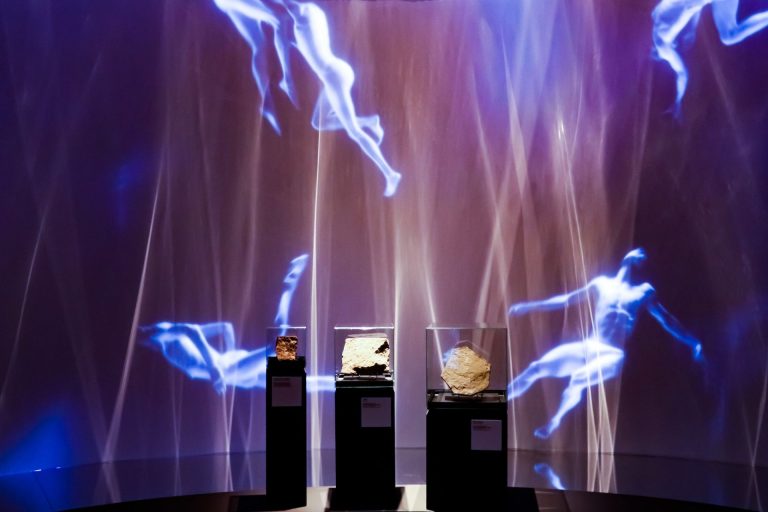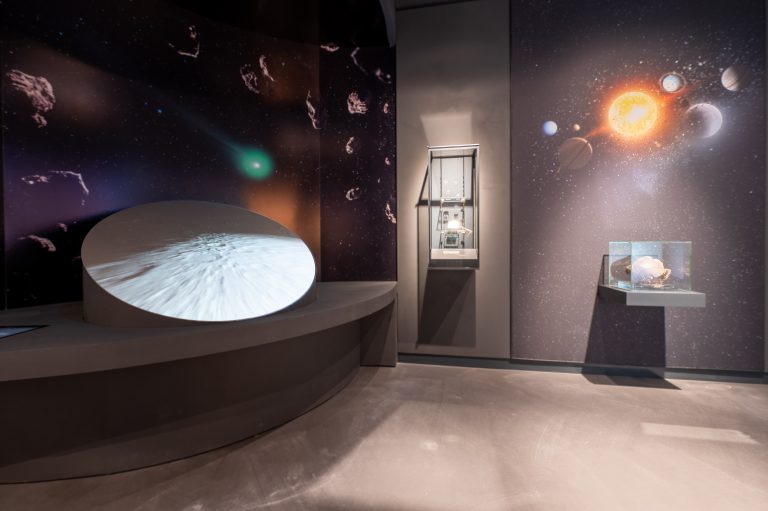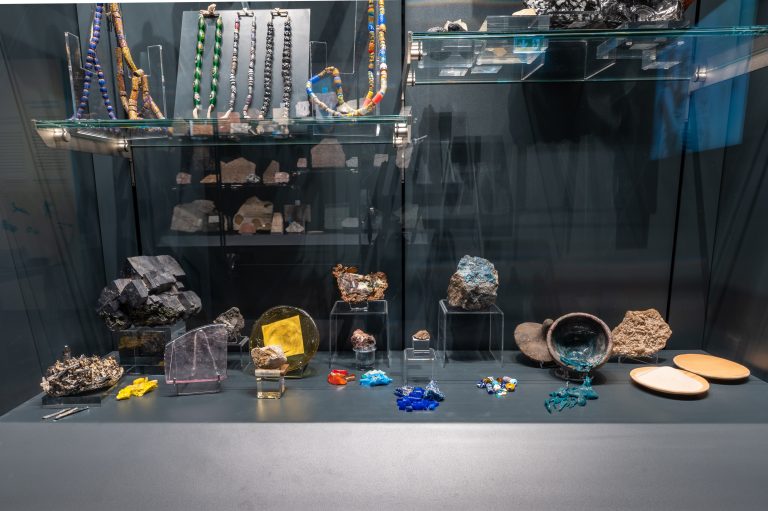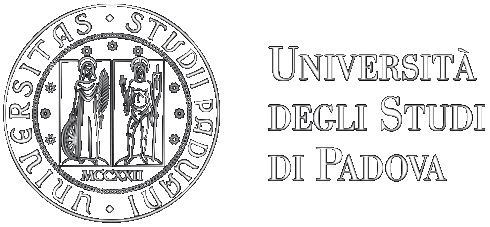Right from the beginning: the museum tour starts with the solar system, narrating its formation and the formation of our planet by means of a rich collection of meteorites – messengers from space that describe the origins of our universe. Among them is a fragment of the famous Murchison, one of the most renowned and most studied meteorites.
The tour takes us from Space to Earth – through an incredible immersive journey to its core – and back again, revealing the dynamic, ever-changing nature of our planet. These changes are often very slow, but can also happen violently and suddenly.
The result of our planet’s continuous evolution is visible in the large model with a video mapping of the Alpine range, generated by the collision between the African and Eurasian tectonic plates.
In addition to explaining the processes that lead to the formation and transformation of different types of rocks, the exhibition also highlights the pure beauty of minerals, particularly an incredible aquamarine. The exhibits and various multimedia and interactive stations help visitors understand how crystals are formed, how they are studied, what their characteristics are, how and why they are collected.
A particularly interesting interactive station concerns fluorescent and phosphorescent minerals, which change colour before the visitors’ very eyes.
The Museum of Nature and Humankind explores the relationship between our species and the world around us. Since ancient times, minerals and rocks have been a vital asset for Homo sapiens.
The polychrome marbles of the Lazzarini collection reveal the centuries-old relationship between geology, architecture and art. Mineral pigments create an astonishing kaleidoscope of colours.
However, it is worth remembering the consequences that over-exploitation of these resources is having on our planet. Visitors are thus informed about the concept of the Anthropocene, our current geological era in which traces of our species are visible in the rocks. And that’s not good.
